One of the hardest things for beginners is knowing what and how to practice…and how to make it not boring.
In this post, we’ll share the ultimate piano practice routine with you that is both stressless and useful. You’ll work on coordination, hand independence, getting to know the keyboard, and you’ll do all this while sounding good! We’ll break the routine down into four steps.
Let’s get started!
The first step is to relax.
Practicing can feel stressful, but it’s not supposed to be! In fact, we want you to do all these exercises with a smile on your face.
It’s easy to tense up as a beginner because you’re new to the way your body feels while playing. So if you feel tense, double-check your posture. And remember to breathe and reeelaaaax.
Once you’re well relaxed, our first exercise is something called the five-note or five-finger scale.
To play the five-note scale, place your right thumb on middle C and your left pinky on the C below that (low C). Then line up the rest of your fingers.
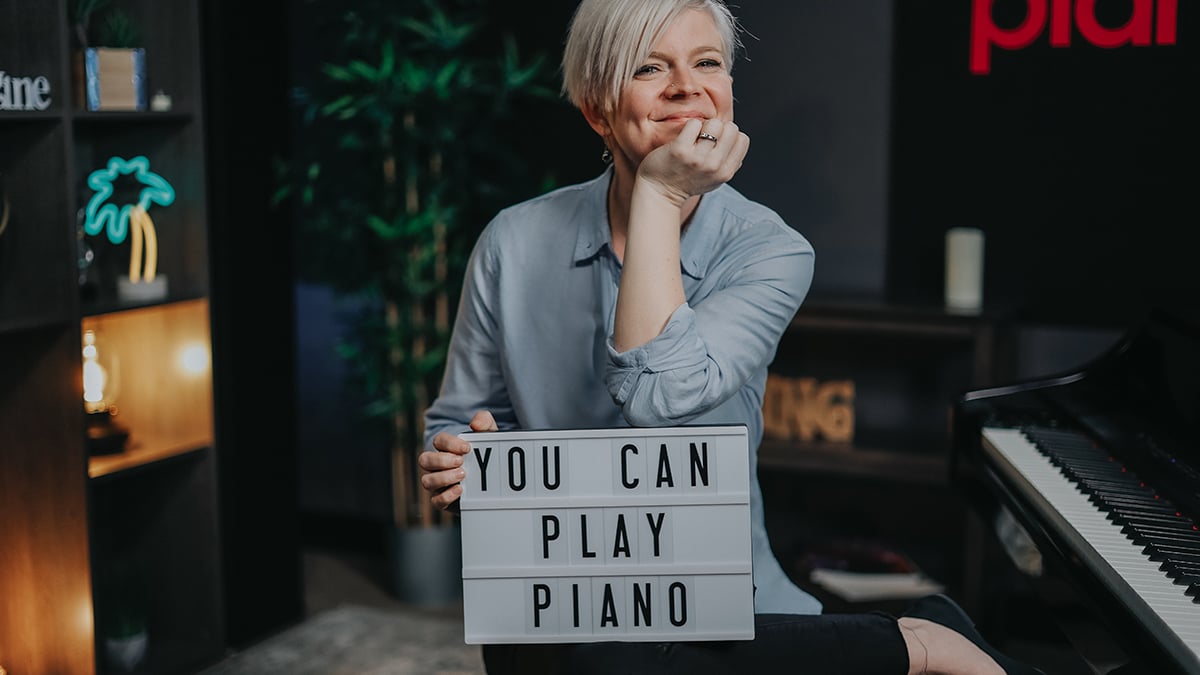
Get started on the right foot (or rather, hand). Get four FREE lessons that will take you from sitting down on the piano for the first time to playing your first song.
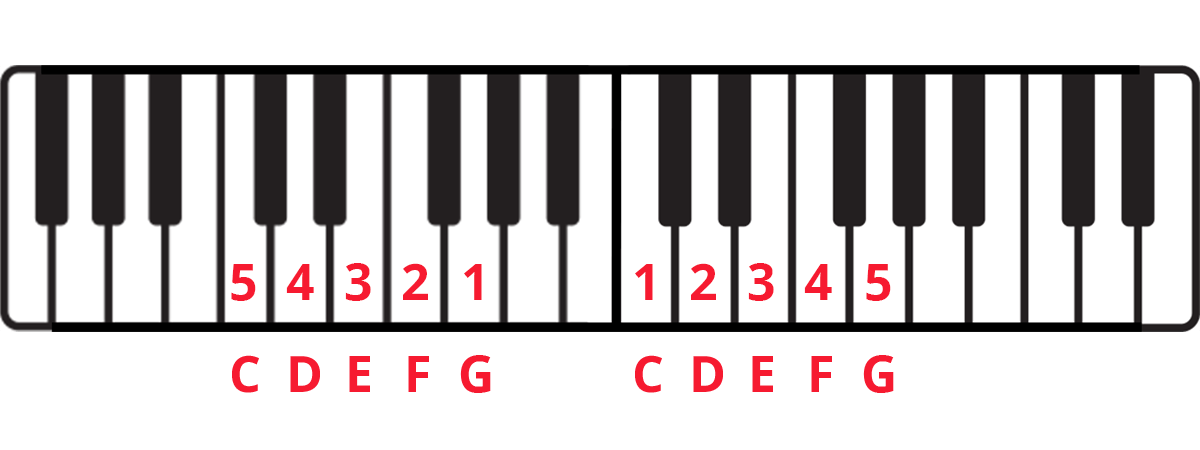
Play the notes together slowly. If this is too challenging, try playing hands separately at first. If playing hands together feels odd, this is normal!
Remember to stay relaxed. Check that your shoulders aren’t tensed up. And breathe.
Alright, time for a change of pace! Let’s move our hands down to the G position, which means lining up our right thumb and left pinky with G. And let’s play the five-note scale here.
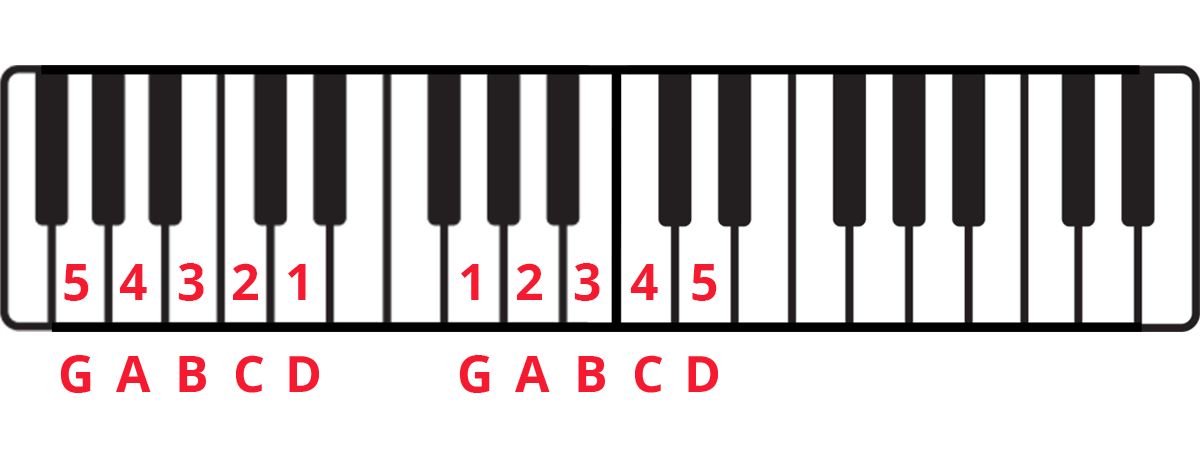
Why? Moving around lets us become more comfortable and familiar with the keyboard.
Let’s change position again! Scooch up a step to A position.
Now, you may be getting impatient and you may want to speed things up. But really try to focus. You’ll see in the video that even after many years of playing my pinky finger still wants to fly away!
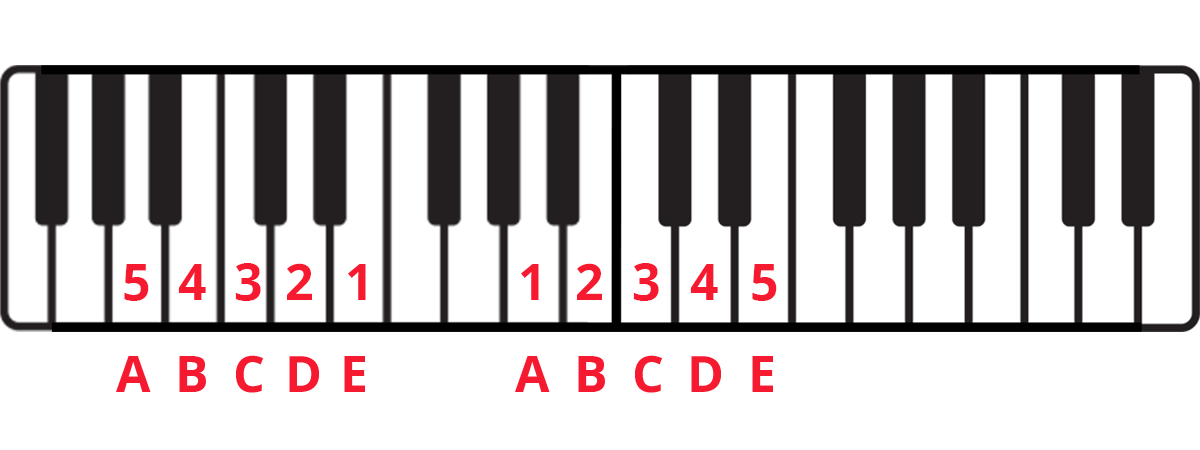
Finally, let’s do the same thing in F position. You can end back on C for a nice, resolved ending.
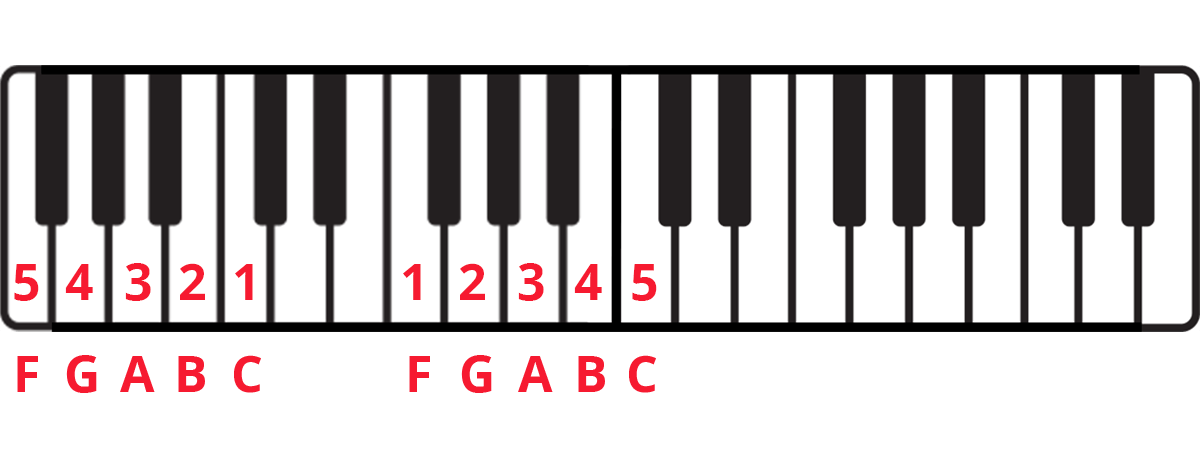
So that’s our warm-up! And while it may look simple, just getting your hands to work together can be challenging for a beginner.
Get free lessons, tips, and piano news delivered to your inbox every week. Subscribe to The Note!
Next, we’re going to play a four-note arpeggio in our right hand. And it sounds so lovely!
While we play the arpeggio on our right hand, our left hand will play a series of fifths using the positions we explored in Step 2.
The fingering will look like this:
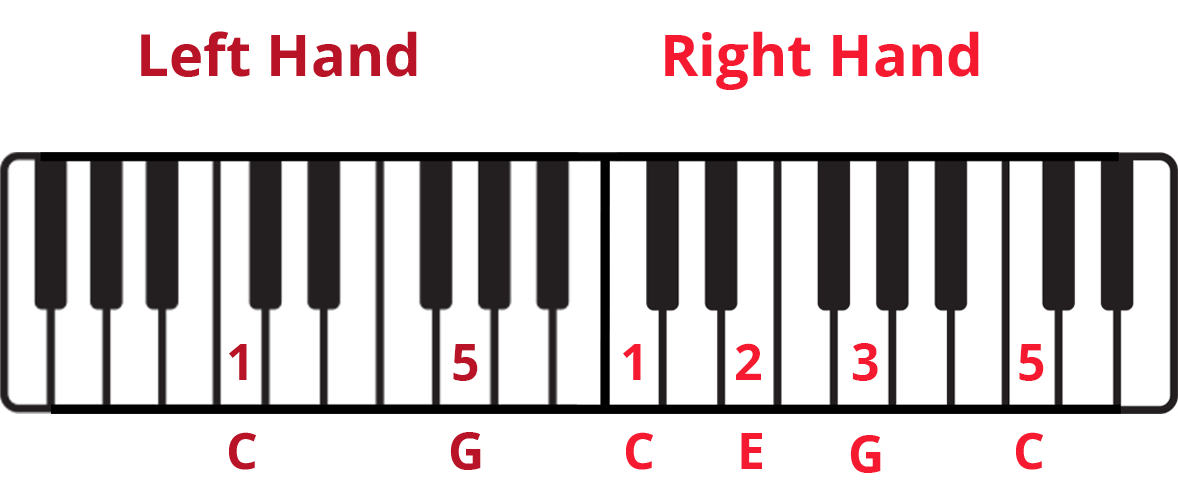
Our series of fifths will go like this:
Match these left-hand fifths with when your right hand plays middle C.
Practice arpeggios well because they make a popular appearance in a lot of piano music! And they sound beautiful 🙂
Now we’ll do something a little different. We’re going to move positions with our left hand and play arpeggios there! For example, here’s what the G arpeggio will look like:
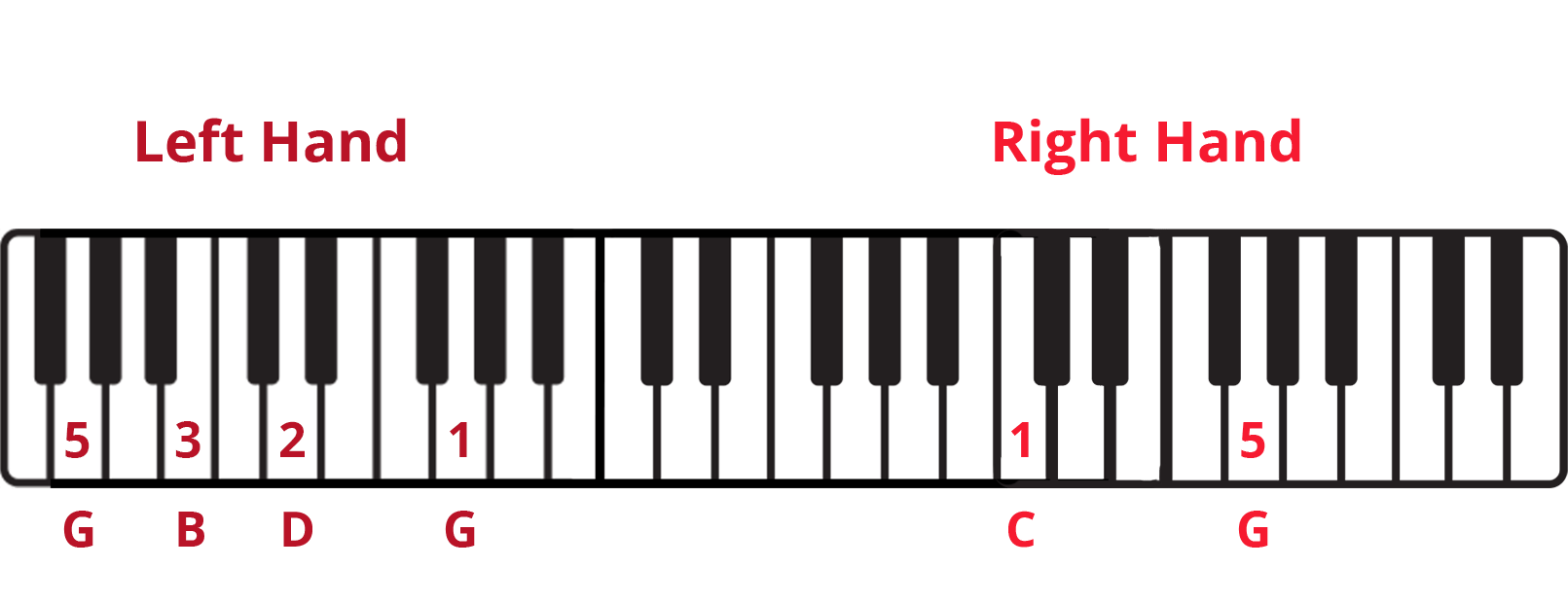
The notes for the A arpeggio are: A-C-E-A.
And the notes for the F arpeggio would be: F-A-C-F. If you know chords, you might recognize these as Am and F chords!
This will take some practice, but go slowly first and you’ll master it in no time!
You might be surprised that we’ve included a song as our fifth step! But hey, playing songs is what piano is all about 😉
Now, this is a super simple song that I’ll teach you note for note. You won’t need sheet music. In fact, I hope this song challenges your ears and creativity.
It’s just a simple three-note melody and our left hand will move through a series of fifth shapes, which you’ve just practiced.
Feel free to rewind the video a few times to get this song down pat! And as always, have fun with this. Make sure there’s a smile on your face 🙂
Lisa Witt has been teaching piano for more than 20 years and in that time has helped hundreds of students learn to play the songs they love. Lisa received classical piano training through the Royal Conservatory of Music, but she has since embraced popular music and playing by ear in order to accompany herself and others. Learn more about Lisa.
/marketing/pianote/promos/april/banner-bg-m.webp)
We use cookies for traffic data and advertising. Cookie Policy »
/marketing/pianote/promos/april/banner-title.webp)